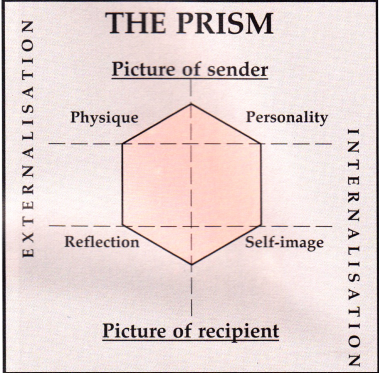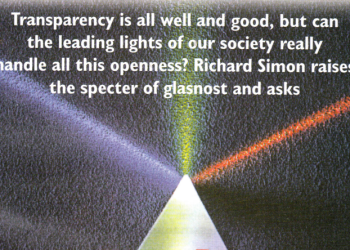
Ajai V Singh
True, isn’t it? Look around and you will realize that brands play such an important part in our lives, in fact they legitimatize and communicate products to us. Coke or Pepsi for cola drink, Kellogs for breakfast cereals, Maliban for biscuits, Nescafé for instant coffee and the list goes on. Imagine a scenario where you have to decide between products which have no names or brands. Could you tell one product from another? Brands not only identify products, they give meaning to them.
This article aims to analyze brands by using the Kapferer(1992) brand identity prism, taking it further by drawing an analogy and extensions. Though, it is like touching the tip of an iceberg, it gives an insight into the process of building brands.
What is a Brand?
The Oxford Dictionary defines a brand as a trademark, a mark made by hot iron, an exercise that has been practiced for many hundred years. But in today’s context, authors and organizations around the world have different definitions and explanations for it.
“A brand is a total experience of a product, its personality and its trust’, ‘Product is made in the factory, Brand is bought by the consumer’ and many more. But one definition that, I feel, explains a brand very simply and convincingly is ‘a brand is nothing, but a bias in the consumer’s mind’. If you look at brands such as Coke, Maliban, Kellogs, etc., you will notice that they are all set in the consumer’s mind and are difficult to dislodge as they fulfill certain promises. For example, if you were to buy an unbranded international coffee and brand it as Nescafé; give it to a regular Nescafé consumer, it will be accepted instantly or till the time the consumer finds out its true identity. Similarly, if an actual Nescafé bottle is given to a consumer without the branding on it. It will be refused. Why? Because, in the consumer’s mind, Nescafé is embedded as a name that brings with it a guarantee of quality and a typical flavor. A promise that others may not deliver.
Kapferer’s Prism
Kapferer(1992) has developed a Brand Identity Prism which is represented diagrammatically by a six- sided prism. (See diagram above right).
These six facets namely: Physique, Personality, Relationship, Culture, Self-image and Reflection, define brand identity and its potential territory. The first four facets are elaborated later on when we draw an analogy. The prism structure is derived from one basic concept that a brand has a voice. A brand does not exist unless it communicates. It would decline in strength if allowed to remain silent and unused for too long. On the top of the prism there is a sender. The physical and personality facets surround this figurative sender. What is sent out to the consumer is very physical, that is, a branded product. At the bottom of the model is a recipient, who receives the brand and perceives its values and personality, as if a certain type of person or audience were being addressed. The reflection and self-image is the inward feeling that the recipient or the consumer experiences when he comes in contact with the brand. The reflection and self-image facets surround the recipient, who in turn forms part of the brand identity. Besides the top and bottom there is a vertical division with facets to its left-physique, relationship and reflection. These are the social facets which give a brand its outward expression. Facets to the right personality, culture and self-image, are those incorporated within the brand itself, within its spirit.
Brand-A human being
We take Kapferer’s model further and draw an analogy, using some of the facets from the prism. In a global marketplace brands are like human beings, an analogy we can rightfully draw. Like human beings they have a physique, they have a personality, they have a character, they have a culture, they have a relationship (with a consumer), they speak (with consumers), they have a style of their own. In today’s market they are no different from human beings. The physique of a brand is something that is visible to our eye-like the distinctive styling of a Ferari that signifies Italian designing or Red Cow’s yellow and red pack. Every brand has a personality, something that is not visible but is perceived by the consumer- for example, a brand personality can be masculine, strong or sensual. The brand personality of Evian, the natural spring water from the French Alps, is sensual, feminine and is pleasing to the body. A brand personality is carefully defined while keeping in mind the brand’s core values, what it stands for, its proposed relation ship with the consumer and its objectives in the market.
Every brand has a character. Character is something never spoken of, or communicated. It is quiet and underlying, and comes out subconsciously. Character is also reflected by the style of communication. For example, Porsche’s character is that of a hero. The exercise of arriving at the brand character is very important and therefore, demands a very thorough under- standing of the brand more so, as the character proves to be an important focal point for all brand related activities. Brands have their own culture that depict their background and the environment in which they are developed. For instance, Maliban’s culture is very Sri Lankan, it can be recognized by the brand’s activities and the satisfaction it delivers to the local consumer. Brands have a style of communication that communicates their promise and values. For example, Coke has a distinctive style of communication that brings out a feeling of refreshment, and reflects the brand’s promise and what it stands for. Each consumer shares a relationship with a brand, that is built over a certain time. The relationship is based on the benefit that the brand promises to deliver to its consumer. This builds confidence in the consumer’s mind and the result is regular usage.
All the values and characteristics of the brand are carefully communicated by advertising and marketing consultants around the world. So much so, many multinational advertising agencies have their own models and techniques to evaluate the brand’s funetion and its position in the market. Ted Bates created a system called a new USP (Unique Selling Personality). Millward Brown has devised a system called Brand DynamicsTM to track brands. Brands have to communicate their values to the user or the consumer will see no meaning in a brand.
Brands, products and extensions
Every product has a life cycle, something that a brand does not have. Brands can go on forever by adapting to products which innovate according to the existing market scenario. Brands even extend their umbrella to other products if they deliver the same values as the existing brand. Brands also extend their mark on products that are a result of the manufacturer’s core competencies. For example, Gillette and BIC. Gillette has moved from manufacturing men’s shaving razors to other components of men’s toiletries and further to manufacturing female razors. Canon now produces photocopy machines, these strategic moves define, what is called Brand extension.
Some of the well-known brands are taking extensions even further (or beyond their product sphere). But one aspect they are not sacrificing (or should not sacrifice) is the brand’s character and its core values. Can you imagine Harley Davidson in toiletries segment or Coke making spectacle covers? Sounds strange! But true. Harley Davidson has a range of Men’s toiletries which projects Harley Davidson’s brand personality. This range has a look of masculine ruggedness, inspired by the motorcycles it manufactures. Each of these products have chrome and metallic colors. Some of the other examples include, Jaguar range of men’s perfumes, Mercedes Benz boutiques in different parts of Europe that sell products ranging from watches to jackets and clothings.
In today’s global market, the power of brands is enormous. This cannot be better expressed, than in the words of John Stuart, president of Quaker Oats company 1922-42, this business were to be split up, I would be glad to take the brands, trademarks and goodwill, and you could have all the bricks and mortars and I would fare better than you. “Though these words are from a different generation, they are even more relevant and accurate today. More than the financial statement you can judge a company by the number and kinds of brands it has. There have been. 138 books published on this subject in the English Language in the past three years alone. This alone goes. to show the growing interest and importance of this subject, which is being discussed in corporate houses the world over. The process of building brands is a long. drawn out one. It takes time, vision and the right strategy to make brands a success. Failing that, many brands die an early death. What we see in the market- place in the long term are only the successful ones.
Ajai V Singh who is currently working with Trikaya Grey, did his MBA in intemational Business from Sydney, Australia. He has worked in Australia and india before being transferred to Colombo with the Multinational Advertising House, to look after the company’s multinational accounts.



